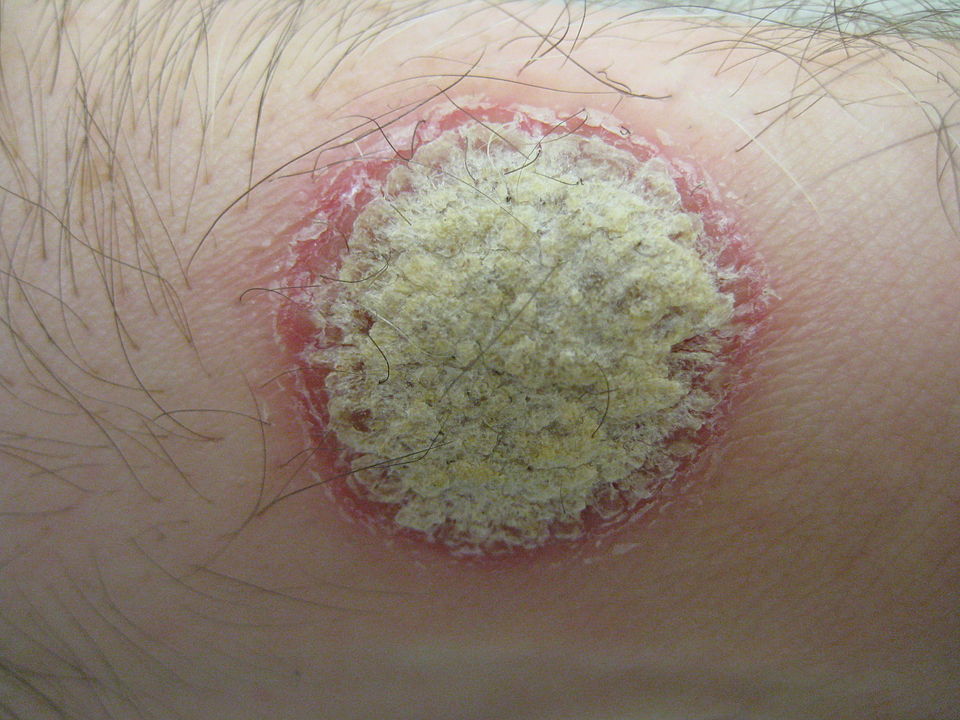
Atopic dermatitis (AD) is often thought of as an inflammatory disease that arises from a breakdown in the barrier function of the skin. Now a new study pinpoints a cascade of inflammatory signalling that precedes the appearance of skin ulcers, shedding light on the early stages of the condition and possible new drug targets.
The work, published in the journal Science Translational Medicine, was the result of a cross-school and cross-institutional collaboration among researchers.
“You have researchers in the dental school noticing a skin condition, broadening their work to the medical school and experts on computational systems biology,” said Professor Dana Graves, a co-corresponding author on the paper. “Without this interdisciplinary collaboration, that initial finding would not have gone anywhere.”
John Seykora, a co-corresponding author and professor of dermatology, agreed. “This shows one of the benefits of being part of a university with experts across fields,” he says. “Our dental school colleagues developed a mouse that manifested a particular skin phenotype, and the question was, What was this and did it resemble any disease we might know? And in the end it did, and it’s providing some novel insights into a very common skin condition in humans.”
The work began with an exploration of the role of inflammatory signalling in bone fracture healing in diabetes. A focus was on nuclear factor kappa-B (NF-kB), a master regulator of inflammatory responses. As part of that work, researchers developed a mouse model lacking an activator of NF-kB signalling, IKKB. The researchers noticed that these animals developed skin lesions as they became young adults.
“That was interesting to us because these ulcerations looked like an inflammatory event, but we had effectively turned off the activity of NF-kB, which should reduce inflammation,” said Prof Graves. “So this was a paradox.”
To better understand what was driving this response, they sought expertise in skin diseases from Prof Seykora. When they examined the mice, they noted several features quite similar to AD, “albeit the mouse version” said Prof Graves.
In particular, they noted skin thickening and an infiltration of certain types of white blood cells that are also seen in human AD. Delving deeper into how the loss of IKKB was driving these effects, the team performed single-celled RNA analysis combined with a new analysis method. The team learned that fibroblasts were the culprit, a major component of the skin’s dermis layer and typically thought to support the structural integrity of skin.
Though NF-kB typically promotes inflammation, here, decreased NF-kB activity was paradoxically leading to recruitment of immune cells and associated inflammation. Data from the team’s single-cell RNA analysis pointed to high activities of a protein transcription factor called CEBPB, as well as a signalling molecule, CCL11, “We worked out the mechanism in the mouse,” Prof Sekora said, “then showed that much of it applied in human tissue as well.”
When the researchers compared what they had seen in the mouse cells to skin samples from people with AD, they found similar patterns; CCL11 and CEBPB were both found at higher levels in the affected skin than in unaffected skin.
Testing a monoclonal antibody against CCL11 in mice tamped down the inflammatory response they had initially seen in animals lacking IKKB, suggesting that this could be a target to reduce AD-associated inflammation.
The researchers say the work also highlights a developing appreciation that fibroblasts play important roles in immune processes in the skin, indicating that they are important regulators of white blood cells.
AD typically emerges in childhood, often manifesting along with asthma. Indeed, in the mice, too, the signalling abnormalities the researchers observed occurred in a period corresponding to the animals “childhood.” The group’s findings suggest that fibroblasts may be involved during this period in helping to establish appropriate immune signalling in the skin.
“We have viewed NF-kB as a factor that stimulates inflammation, but it could be that, during development, its activation might be important for maintaining homeostasis,” said Prof Graves.
The team’s next steps are to further explore NF-kB signalling in fibroblasts.
Source: University of Pennsylvania

